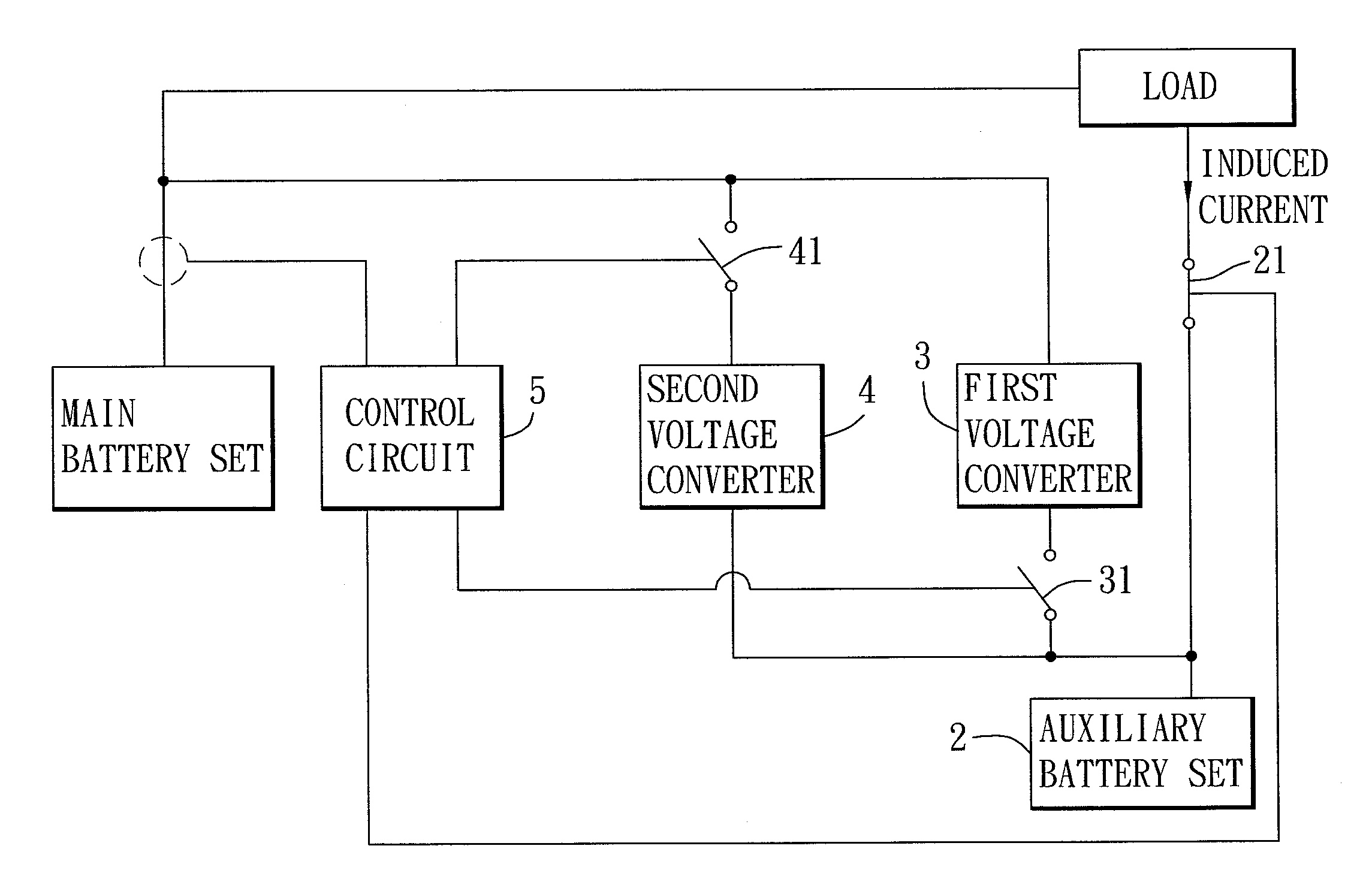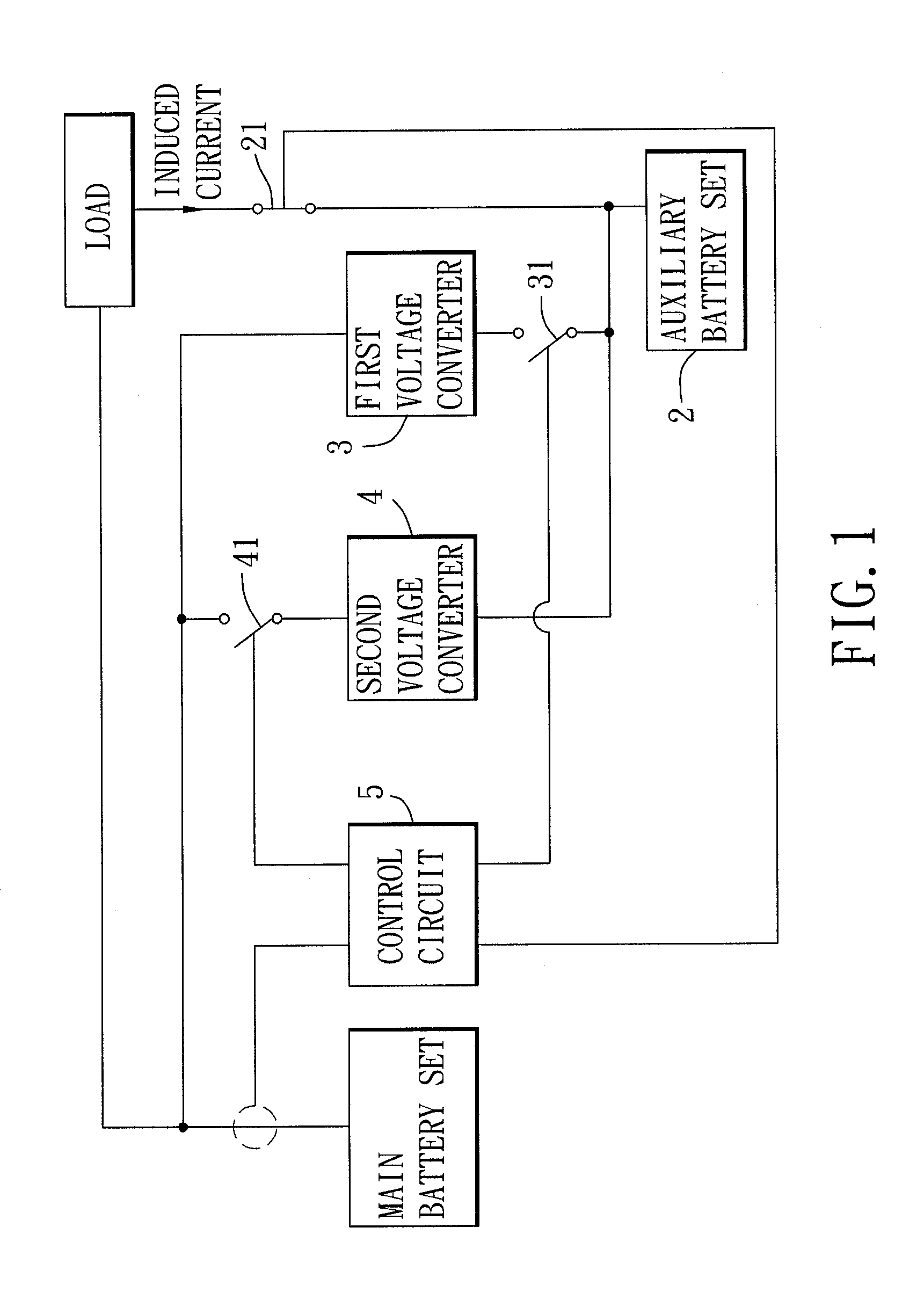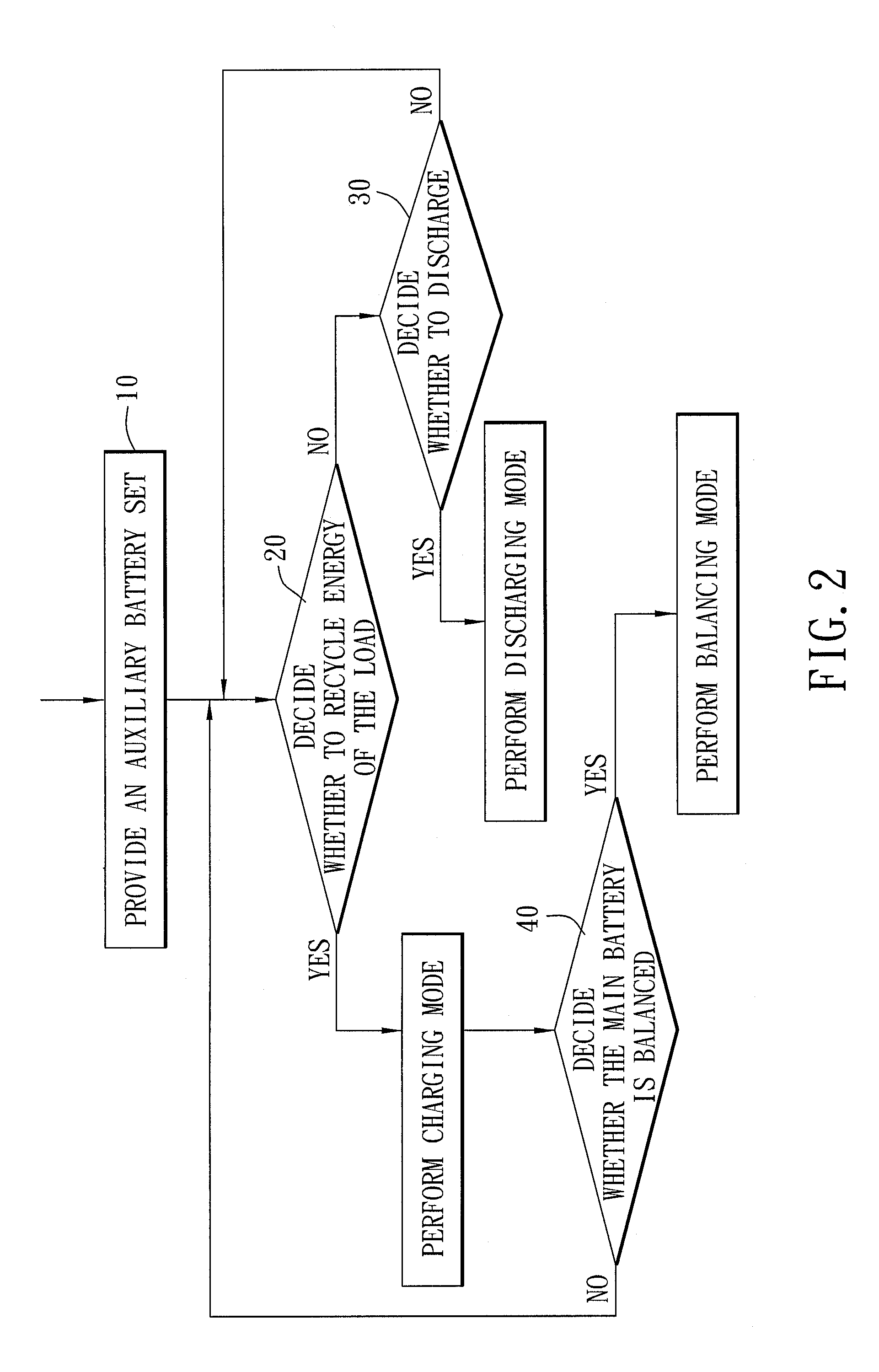Battery protection system and method thereof
- Summary
- Abstract
- Description
- Claims
- Application Information
AI Technical Summary
Benefits of technology
Problems solved by technology
Method used
Image
Examples
Embodiment Construction
[0025]As shown in FIG. 1, the preferred embodiment of a battery protection system according to the present invention is adapted to be coupled between a main battery set having a plurality of batteries and a set of input / output (I / O) terminals, and a load. The battery protection system is operable in a discharging mode, a charging mode, and a balancing mode. The battery protection system is for preventing a high current from the load (regenerative current) from damaging the main battery set, and for lengthening the lifespan of the main battery set. Furthermore, in the present embodiment, the load is a motor capable of accelerating and decelerating and suitable for use in electric vehicles having regenerative motors. The battery protection system comprises: an auxiliary battery set 2, a first switch 21, a first voltage converter 3, a second switch 31, a second voltage converter 4, a third switch 41, and a control circuit 5.
[0026]The auxiliary battery set 2 is capable of charging and d...
PUM
 Login to View More
Login to View More Abstract
Description
Claims
Application Information
 Login to View More
Login to View More - R&D
- Intellectual Property
- Life Sciences
- Materials
- Tech Scout
- Unparalleled Data Quality
- Higher Quality Content
- 60% Fewer Hallucinations
Browse by: Latest US Patents, China's latest patents, Technical Efficacy Thesaurus, Application Domain, Technology Topic, Popular Technical Reports.
© 2025 PatSnap. All rights reserved.Legal|Privacy policy|Modern Slavery Act Transparency Statement|Sitemap|About US| Contact US: help@patsnap.com



